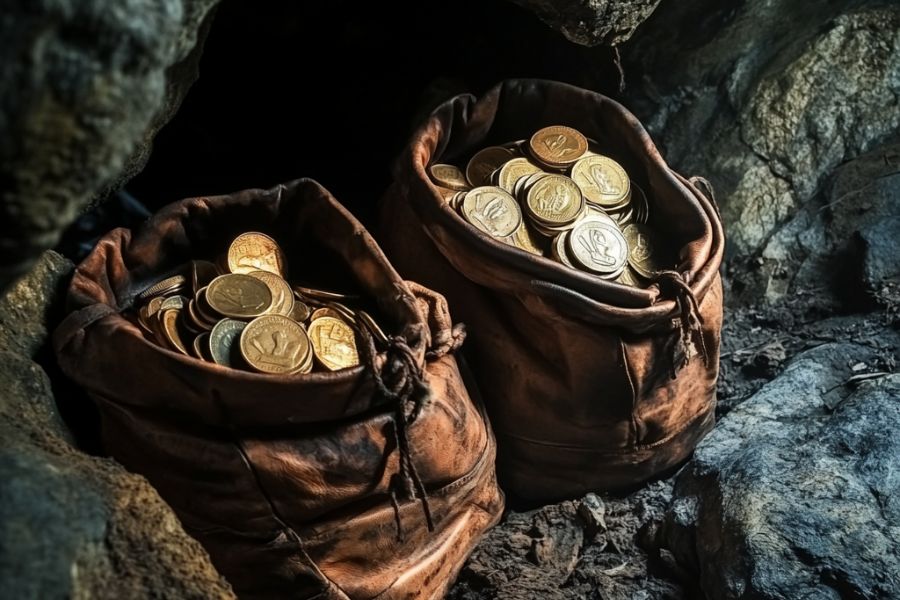Millions in gold coins, precious jewels, and priceless artifacts lie hidden across America’s vast landscape. These forgotten fortunes have captivated adventurers and historians for generations, creating legends that echo through time.
Bandits, war generals, and wealthy merchants all contributed to this massive hidden wealth. Some treasures were stashed in panic during battles, while others were carefully concealed by crafty thieves who never returned to claim their loot.
You are going to be really surprised to learn that lost treasures that can be found in all the U.S. states
Professional treasure hunters spend their lives searching for these prizes. Now more than ever, advanced technology helps reveal clues that were impossible to find just a few decades ago.
Highly Valuable Treasures Hidden Across the U.S.
Scattered across the country, these lost riches remain undiscovered, waiting for the right explorer to unearth them:
The Beale Treasure – $65,000,000+

In the early 1820s, adventurer Thomas J. Beale led a group of men on an expedition westward from Virginia. They discovered a vast cache of gold and silver near Santa Fe, New Mexico.
To secure their find, Beale buried the treasure in Bedford County, Virginia, and created three encrypted ciphers detailing its location, contents, and the names of the owners’ next of kin.
He entrusted a box containing these ciphers to a local innkeeper, Robert Morriss, with instructions to open it if he did not return within ten years. Beale never returned, and only one of the ciphers has been partially decoded, revealing the treasure’s contents but not its location.
The remaining ciphers have baffled cryptologists and treasure hunters for over a century, fueling speculation and numerous search attempts.
How much the treasure would be worth today
The Beale Treasure is estimated to be worth over $65 million.
The Oak Island Money Pit – $250,000,000+
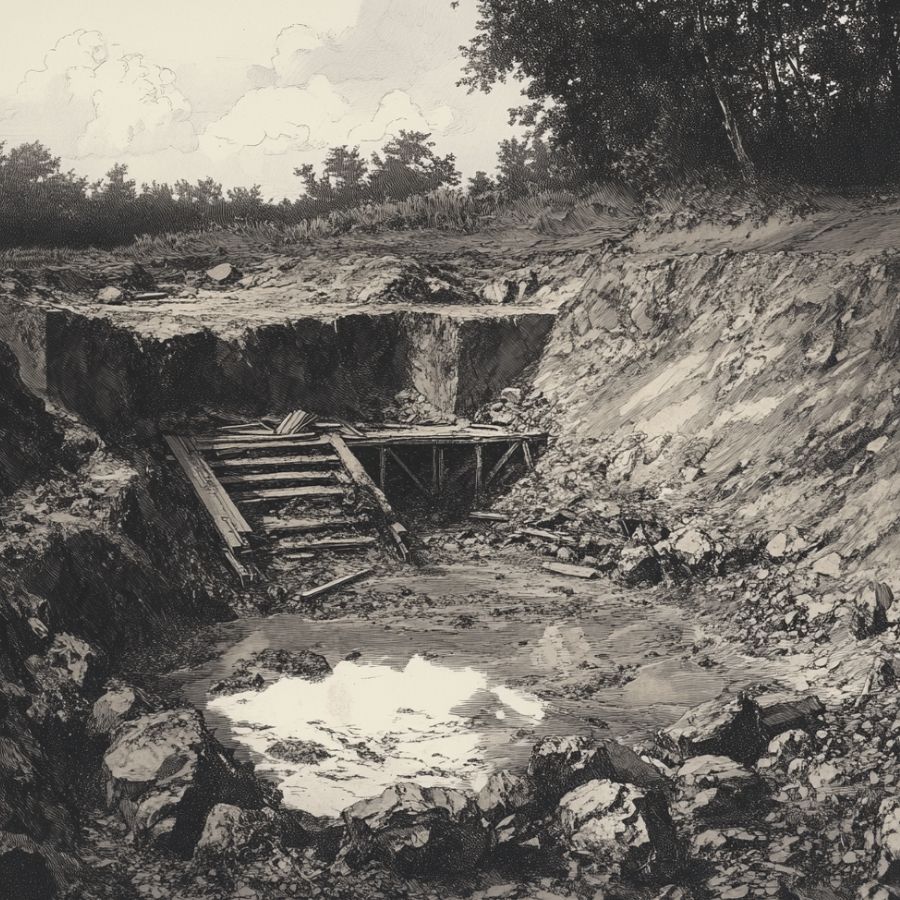
Off the coast of Nova Scotia lies Oak Island, home to one of the world’s most intriguing mysteries. In 1795, a teenager named Daniel McGinnis discovered a depression on the island’s surface, sparking curiosity about hidden treasure.
Excavation revealed a shaft with wooden platforms at regular intervals, later dubbed the “Money Pit.” Over the centuries, numerous expeditions have attempted to reach the bottom, encountering complex flooding traps and layers of coconut fiber, which is not native to the area.
Theories about the pit’s origins range from pirate treasure buried by Captain Kidd to hidden religious artifacts like the Holy Grail or the Ark of the Covenant.
How much the treasure would be worth today
If the Oak Island Money Pit contains gold and jewels as some researchers suggest, its estimated worth could exceed $250 million.
The Treasure of Lima – $200,000,000+
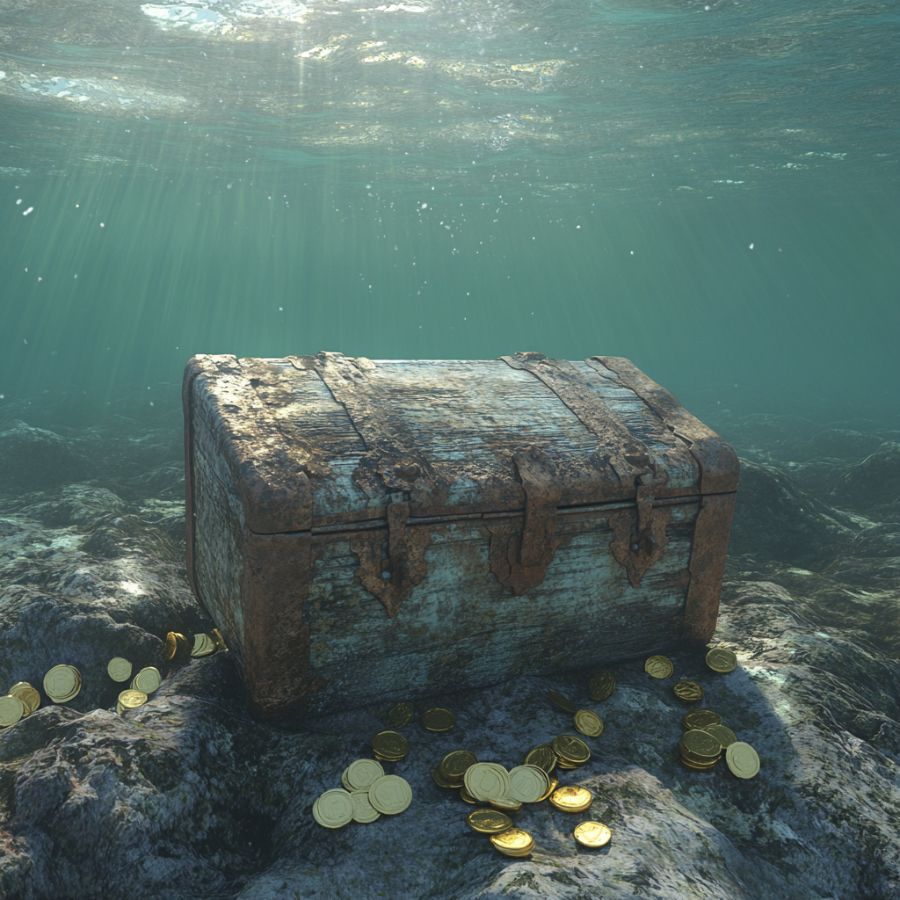
In 1820, as revolution threatened Spanish rule in Peru, officials in Lima sought to protect their vast wealth. They entrusted British sea captain William Thompson with a treasure trove of gold, jewels, and religious artifacts, intending to transport it to Mexico for safekeeping.
Tempted by the immense riches, Thompson and his crew turned pirate, killing the Spanish guards and diverting the treasure to Cocos Island, located off the coast of present-day Costa Rica. There, they buried the loot.
Captured by a Spanish warship, Thompson and his first mate were spared execution in exchange for revealing the treasure’s location.
However, upon returning to the island, they managed to escape into the dense jungle, and the treasure was never recovered. This legend inspired Robert Louis Stevenson’s classic novel “Treasure Island.”
How much the treasure would be worth today
The Treasure of Lima is estimated to be worth around $200 million in today’s market.
The Lost Dutchman’s Gold Mine – $200,000,000+
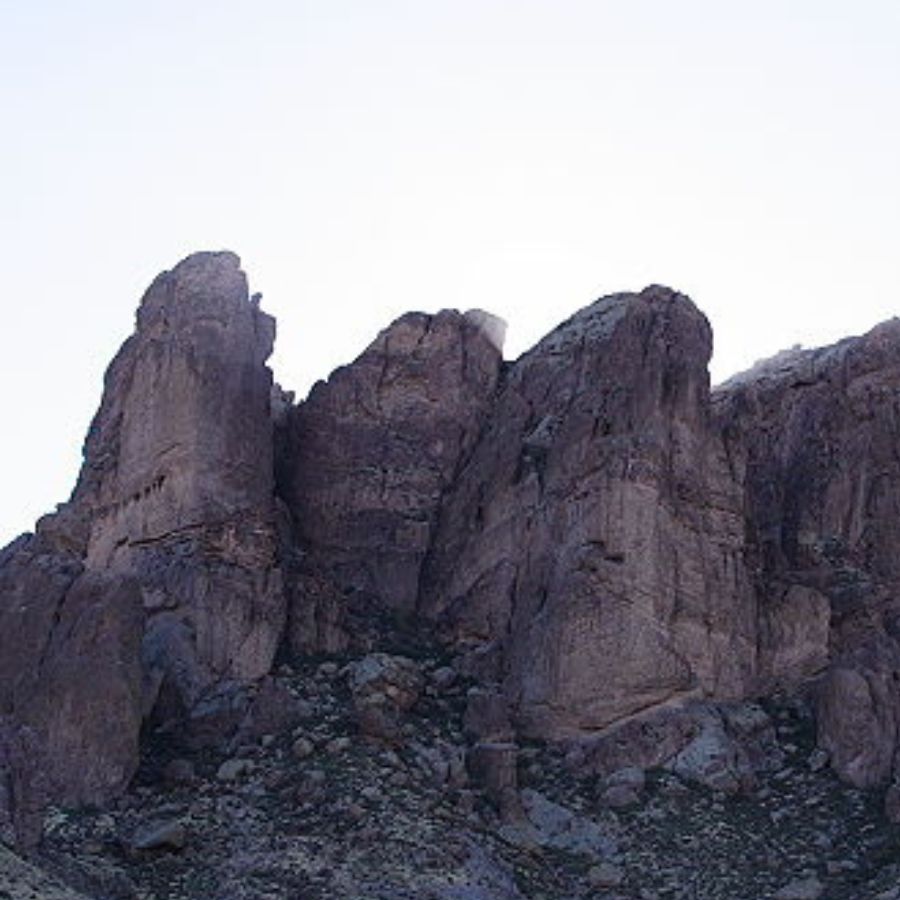
In the late 19th century, German immigrant Jacob Waltz, known as “the Dutchman,” discovered a rich gold vein in Arizona’s Superstition Mountains. With his partner, Jacob Weiser, Waltz extracted and concealed substantial amounts of gold within the rugged terrain.
Tragically, Weiser met his end under mysterious circumstances, possibly involving local Apache tribes or even Waltz himself. Waltz took the secret of the mine’s location to his grave in 1891, leaving behind tantalizing clues that have spurred countless treasure hunters to seek the elusive fortune.
Despite numerous expeditions, the mine’s location remains a mystery, and legends warn of a curse on those who attempt to find it.
How much the treasure would be worth today
Estimates suggest that the Lost Dutchman’s gold could be worth over $200 million.
Confederate Gold – $500,000+
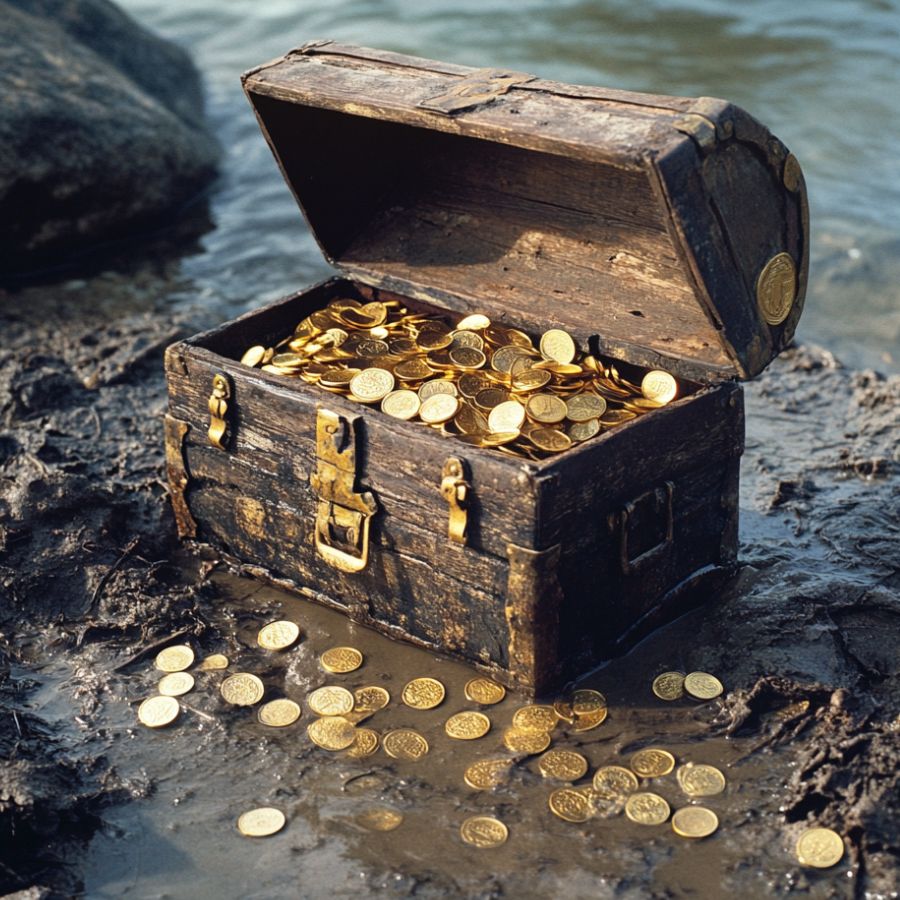
As the American Civil War drew to a close in 1865, the Confederate government faced imminent collapse. In a desperate bid to preserve their assets, officials gathered gold, silver, and other valuables from Richmond, Virginia, and transported them southward.
The treasure’s trail winds through Georgia, with rumors of caches buried in various locations to prevent capture by Union forces. One popular legend suggests that a significant portion was hidden in or near Lake Michigan, possibly intended to fund a resurgence of the Confederacy.
Over time, tales of missing Confederate gold have spurred numerous searches, but the exact fate and location of these riches remain a tantalizing mystery.
How much the treasure would be worth today
Estimates suggest the treasure could be worth around $500,000 today.
Jean Lafitte’s Pirate Treasure – $50,000,000+
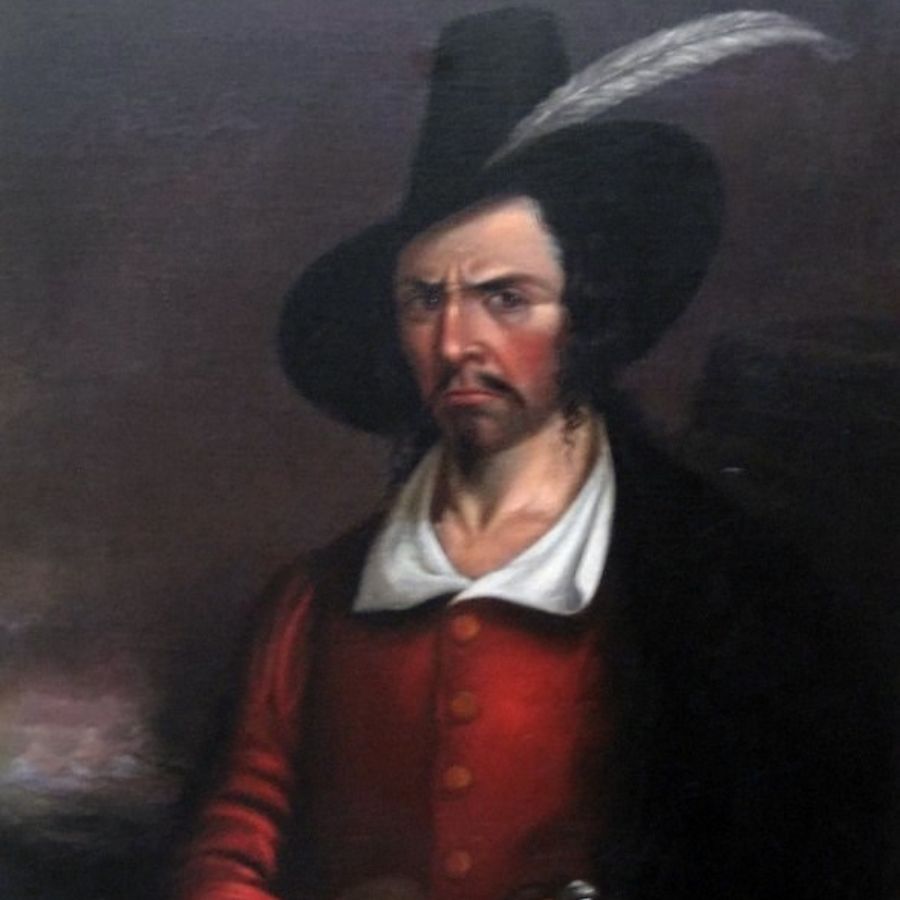
Jean Lafitte, a notorious pirate and privateer, commanded a fleet along the Gulf Coast, particularly around Louisiana and Texas, in the early 19th century. Operating from bases such as Barataria Bay and later Galveston Island, Lafitte amassed substantial wealth through smuggling, piracy, and the illicit slave trade.
As pressure from U.S. authorities mounted, Lafitte and his men were forced to abandon their strongholds. Before leaving Galveston in 1821, they reportedly buried vast amounts of treasure in undisclosed locations along the Gulf Coast.
Over the years, numerous legends have emerged about the possible locations of Lafitte’s hidden wealth. Some tales suggest that treasure is buried near the Pirate Beach community in Galveston, at a site once known as Three Trees. Other stories propose that Lafitte’s loot lies along the Sabine River or in the bayous of Louisiana.
How much the treasure would be worth today
Estimates suggest that Jean Lafitte’s hidden treasure could be worth over $50 million today.
San Miguel Treasure – $2,000,000,000+
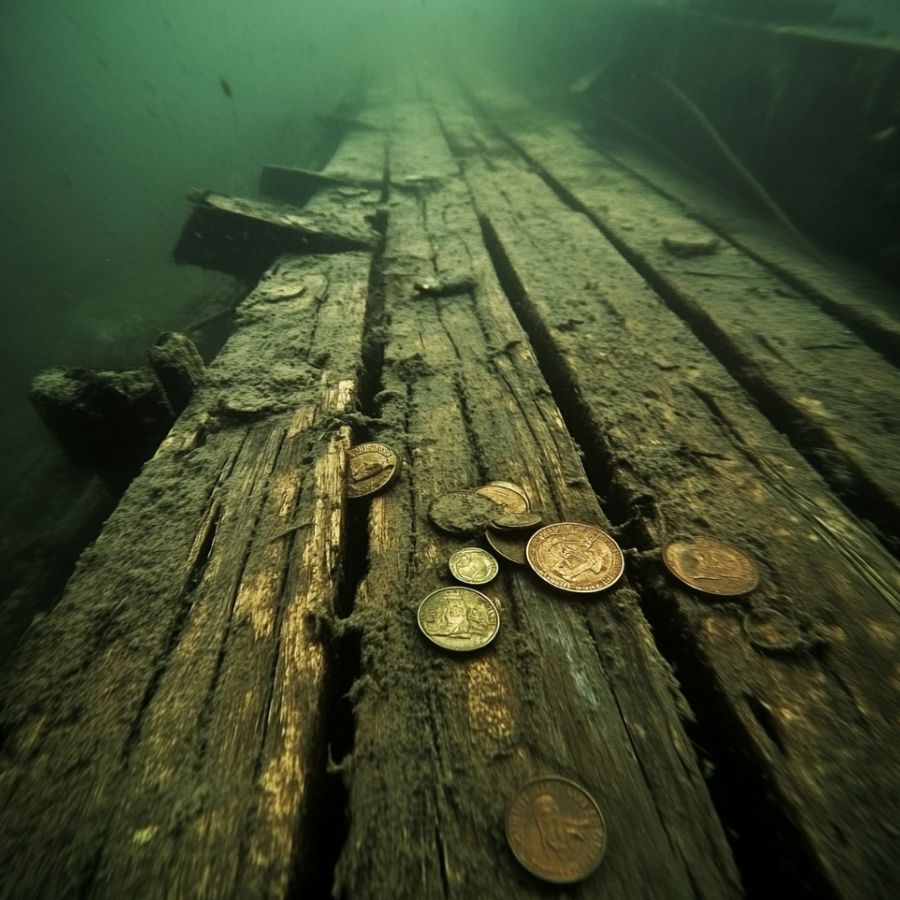
In 1715, the Spanish galleon San Miguel was part of a fleet transporting immense wealth from the New World to Spain. The fleet, laden with gold, silver, and precious gems, departed from Havana, Cuba, in July of that year.
Tragically, a powerful hurricane struck off the coast of Florida, causing the loss of eleven ships, including the San Miguel. While some vessels have been located and partially salvaged, the San Miguel’s exact resting place remains unknown.
Over the centuries, artifacts and coins have occasionally washed ashore, hinting at the treasure that lies beneath the waves. Modern treasure hunters continue to search the waters off Florida’s east coast, driven by the allure of the lost riches.
How much the treasure would be worth today
The San Miguel’s treasure is estimated to be worth approximately $2 billion in today’s market.
Victorio Peak Treasure – $1,000,000,000+
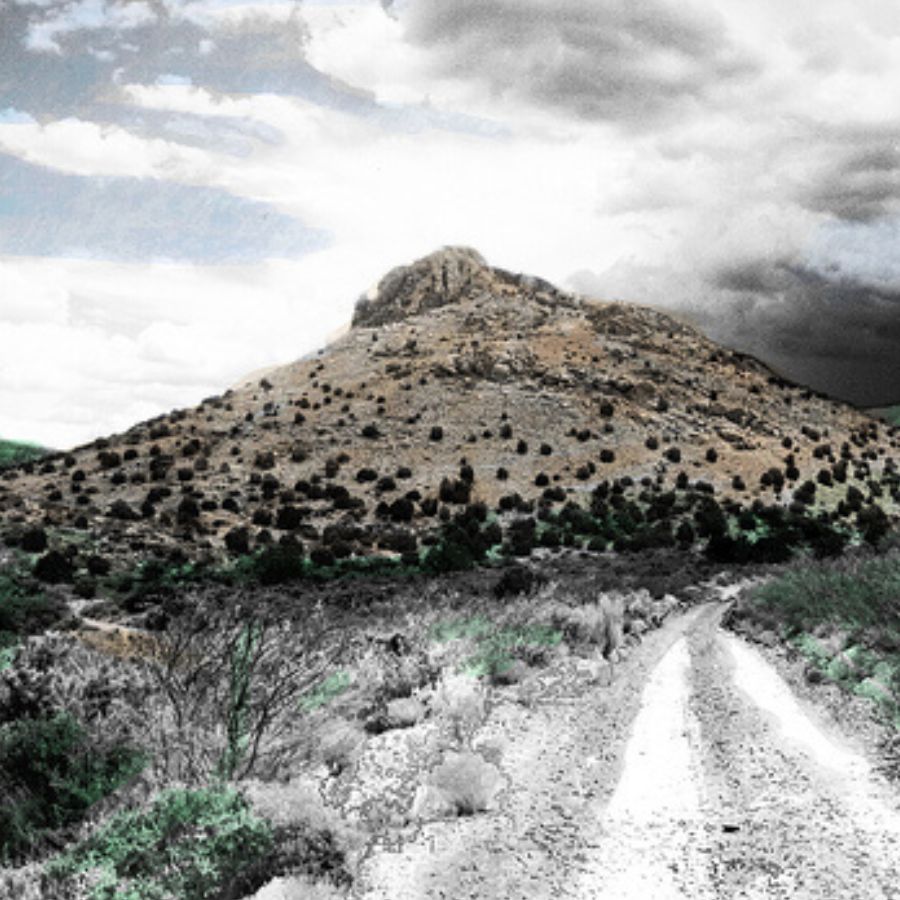
A man named Milton “Doc” Noss claimed to have discovered a hidden cache of gold bars and artifacts within Victorio Peak, located in New Mexico’s Hembrillo Basin, in the late 1930s.
According to Noss, he stumbled upon a concealed cavern filled with riches, possibly hidden by Spanish explorers or outlaws seeking to safeguard their loot. Noss attempted to retrieve the treasure but faced numerous obstacles, including collapsed tunnels and legal disputes.
In the 1950s, the U.S. military took control of the area for missile testing, further complicating access to the site.
How much the treasure would be worth today
The Victorio Peak treasure’s value could exceed $1 billion today.
Mosby’s Treasure – $6,000,000+

During the American Civil War, Confederate Colonel John S. Mosby, known as the “Gray Ghost,” led daring raids behind Union lines.
In 1863, after capturing a significant amount of gold, silver, and other valuables from a Union encampment in Fairfax County, Virginia, Mosby and his men buried the loot to prevent its recapture.
Shortly thereafter, several of his men were captured and executed, taking the secret of the treasure’s exact location to their graves. The enduring legend serves as a testament to the intrigue and allure of Civil War-era secrets waiting to be uncovered.
How much the treasure would be worth today
Mosby’s buried treasure is estimated to be worth around $6 million today.
Shawnee Silver Mines – $50,000,000+
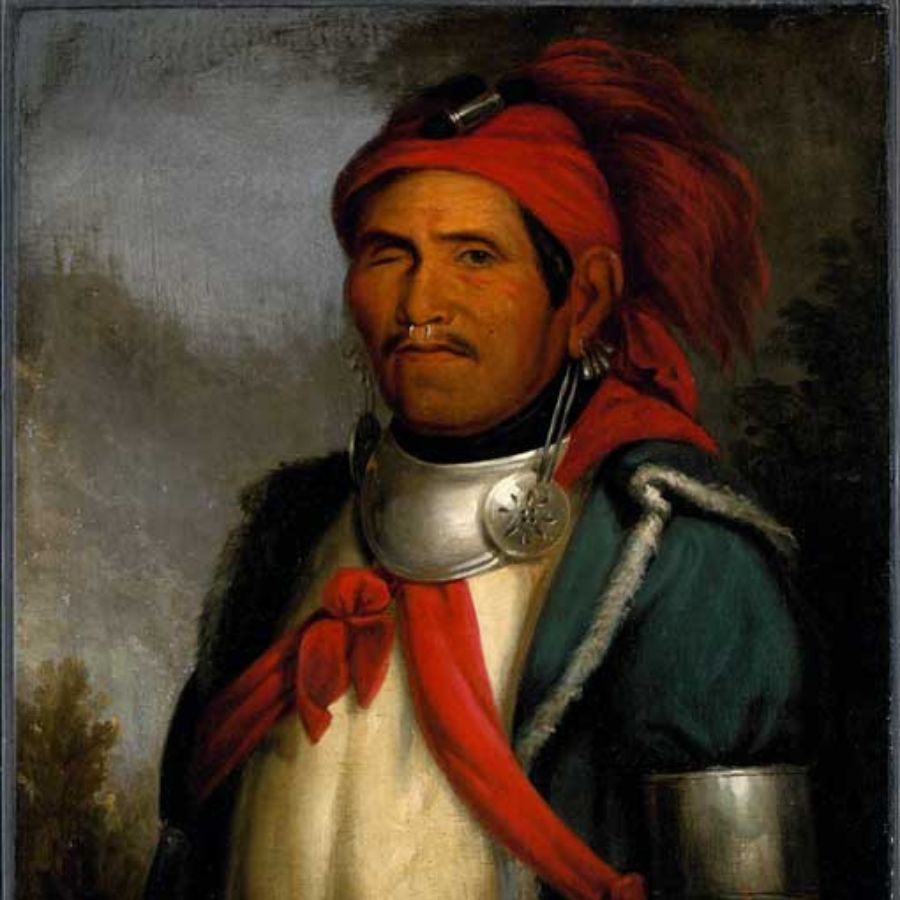
In the late 18th century, stories began to circulate about rich silver mines operated by the Shawnee tribe near present-day Chillicothe, Ohio. Captured settlers recounted being taken, blindfolded, to secret locations where the Shawnee mined and smelted silver.
As European settlers encroached upon their lands, the Shawnee abandoned the mines, and their locations were lost over time. The dense forests and the transformation of the landscape have kept the mines’ secrets hidden for centuries.
This legend of the Shawnee silver mines continues to inspire treasure hunters and historians, eager to uncover the lost wealth and history of the region.
How much the treasure would be worth today
The lost Shawnee silver mines could potentially yield silver valued at over $50 million in today’s economy.
Lost Adams Diggings – $50,000,000+
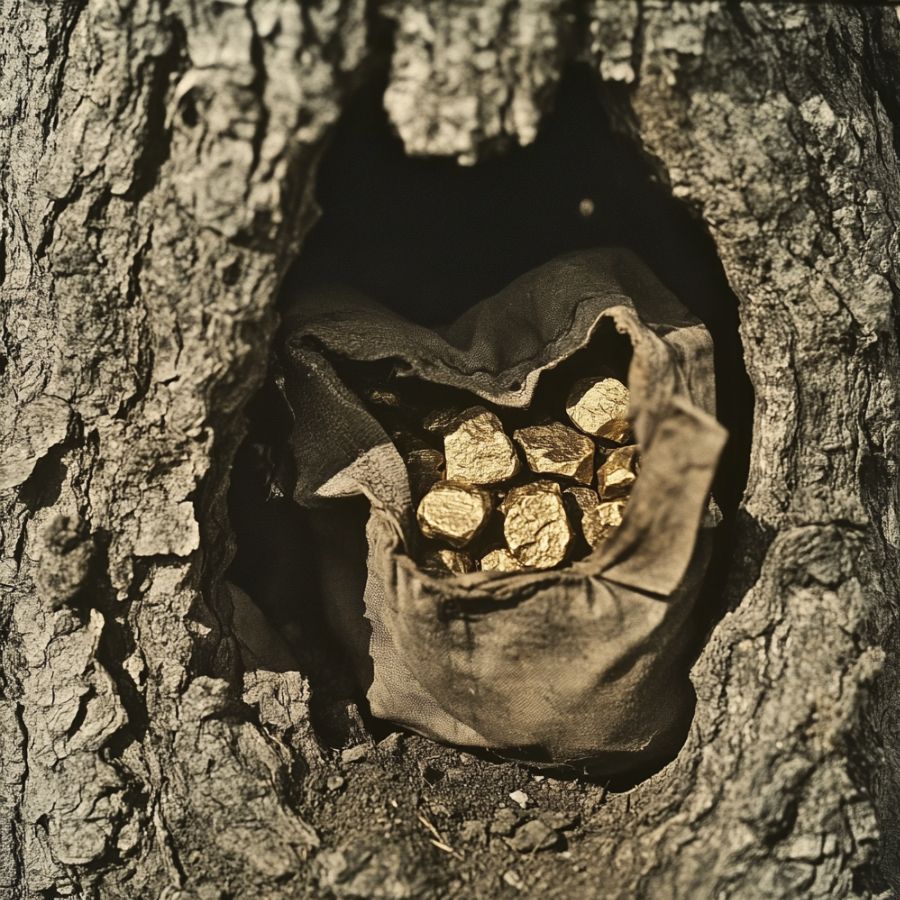
In the mid-19th century, a prospector named Adams embarked on a journey that would become one of the Southwest’s most enduring legends. In August 1864, after surviving an Apache attack that destroyed his wagon, Adams joined a group of miners led by John Brewer.
They were guided by a Pima-Mexican who promised to lead them to a canyon rich with gold. After navigating a narrow, Z-shaped trail, the party entered a secluded canyon with a spring and low waterfall. There, they discovered large gold nuggets, which they began to collect eagerly.
Despite warnings from the guide about the area’s significance to the Apache, the miners set up camp and even constructed a cabin, hiding their amassed gold beneath its hearthstone.
When supplies dwindled, Brewer and a few others left for Fort Wingate to procure more, but they never returned. Growing anxious, Adams and another miner found their companions murdered along the trail.
Rushing back, they discovered their camp attacked, fellow miners killed, and the cabin burned. Adams and his companion barely escaped, eventually rescued by a military patrol. Haunted by the loss, Adams spent years attempting to relocate the gold-laden canyon, but its location remained elusive.
How much the treasure would be worth today
The gold from the Lost Adams Diggings could be valued at over $50 million.
Blackbeard’s Treasure – $12,000,000+
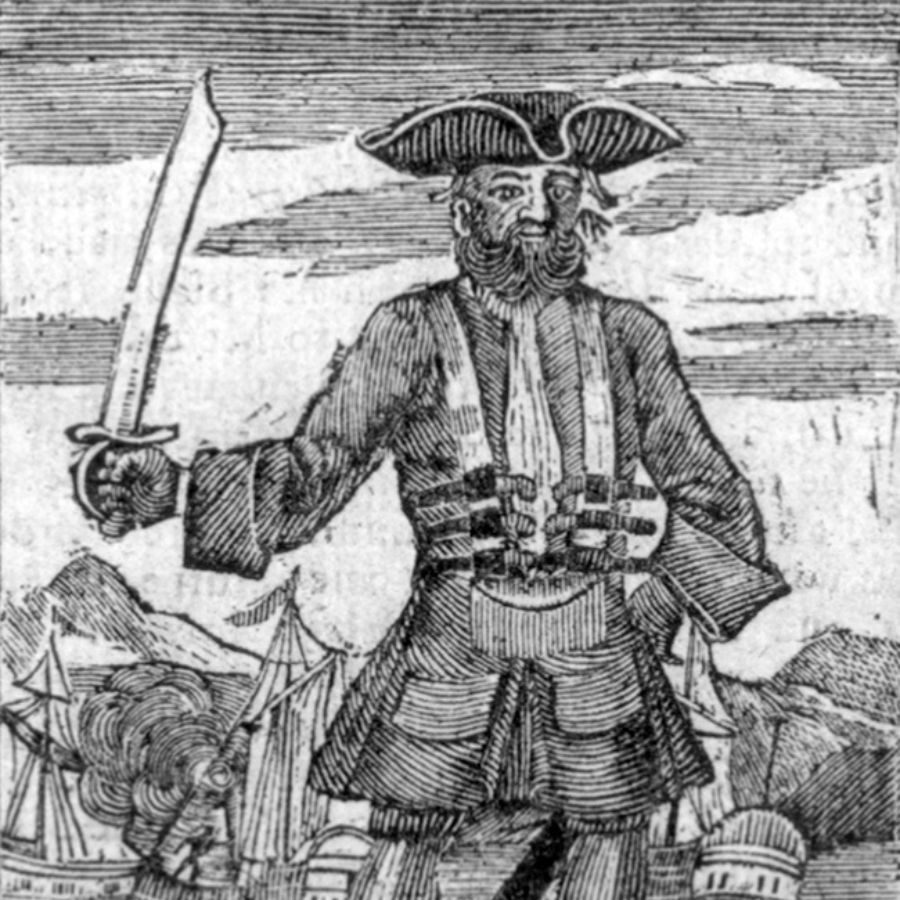
Edward Teach, infamously known as Blackbeard, terrorized the American East Coast during the early 18th century. Commanding the Queen Anne’s Revenge, he plundered numerous ships, amassing a fortune in gold, silver, and jewels.
The Outer Banks of North Carolina, with their treacherous waters and hidden inlets, served as his favored hideout. Despite his reign of terror, Blackbeard met his end in 1718 during a fierce battle with British naval forces.
While his ship was salvaged, the legendary hoard of treasure he reputedly buried along the Carolina coast has never been found. Occasional discoveries of Spanish coins and artifacts have fueled speculation, but the main cache remains one of maritime history’s greatest mysteries.
How much the treasure would be worth today
Blackbeard’s elusive treasure is estimated to be worth approximately $12 million in current valuations.
Lake Michigan Gold – $2,000,000+
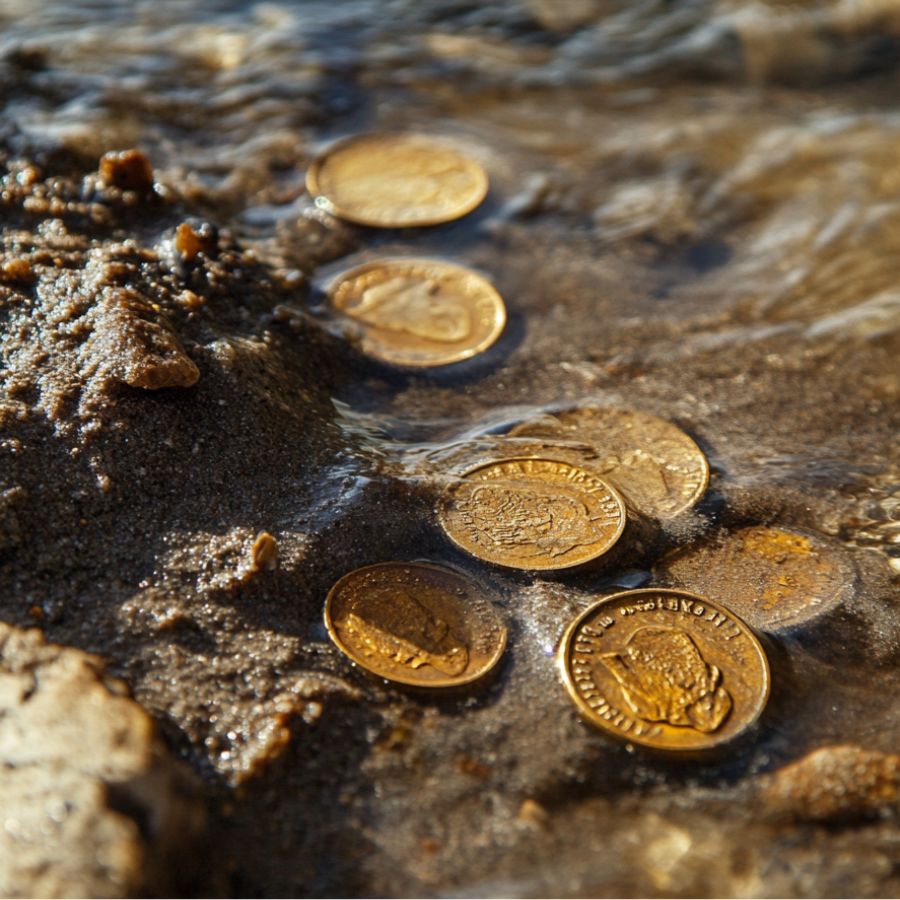
In the late 19th century, whispers of missing Confederate gold began to surface around Lake Michigan.
According to legend, a substantial shipment of gold bullion, intended to finance the Confederate cause, was clandestinely transported north. During a fierce storm, the vessel carrying the treasure reportedly sank, depositing its precious cargo into the depths of Lake Michigan.
Over the years, divers and treasure hunters have embarked on numerous expeditions, hoping to locate the submerged fortune. While some artifacts and shipwrecks have been discovered, the elusive gold remains unfound.
How much the treasure would be worth today
The lost Confederate gold in Lake Michigan is estimated to be worth around $2 million today.
Jarbidge Stage Robbery – $100,000+
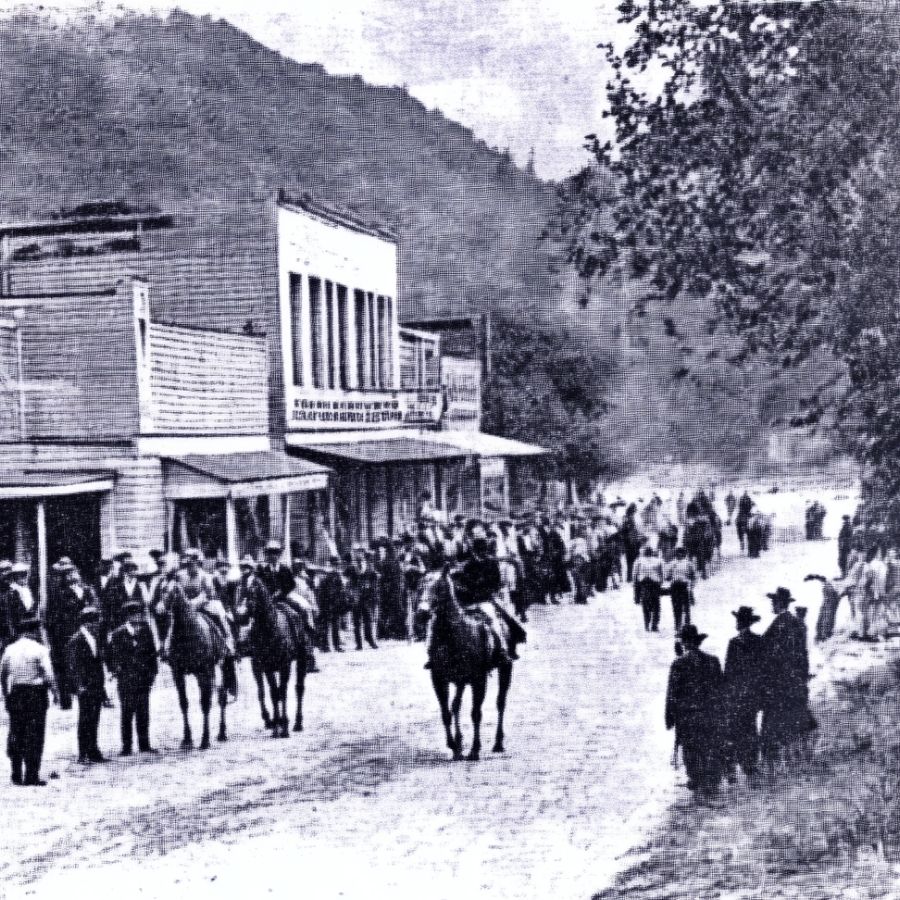
On December 5, 1916, the small town of Jarbidge, Nevada, became the site of the last stagecoach robbery in the United States.
Driver Fred Searcy was ambushed and killed while transporting mail and currency, including a pouch containing $4,000 in gold coins.
The assailant, Ben Kuhl, was apprehended after a bloody palm print on an envelope linked him to the crime, marking the first time palm print evidence was used to secure a conviction. Despite Kuhl’s arrest and imprisonment, the stolen gold was never recovered.
How much the treasure would be worth today
The missing $4,000 in gold coins from the Jarbidge Stage Robbery would be valued at approximately $100,000 today.
Pegleg Smith’s Gold Mine – $10,000,000+

Thomas “Pegleg” Smith, a fur trapper and explorer in the early 19th century, spun tales of discovering black-coated gold nuggets in the deserts of Southern California.
According to his accounts, while traversing the Colorado Desert, he stumbled upon rich deposits of gold atop a trio of buttes. Lacking the means to transport the heavy ore, he marked the location with plans to return.
However, upon attempting to relocate the site, Pegleg found himself disoriented by the vast, featureless desert landscape. Despite multiple attempts, he never rediscovered the gold-laden buttes.
His stories ignited a frenzy among prospectors, leading to numerous expeditions into the arid regions of California. To this day, treasure hunters scour the Anza-Borrego Desert, driven by the legend of Pegleg’s lost mine and the promise of its unique black-coated gold.
How much the treasure would be worth today
The potential value of Pegleg Smith’s lost gold mine is estimated to exceed $10 million.
Captain Kidd’s Treasure – $5,000,000+

William Kidd was born in Scotland in 1645 and became one of the most infamous pirates in history. Initially hired as a privateer by the English government, his job was to attack enemy ships.
However, he turned to piracy himself, capturing a merchant ship, the Quedagh Merchant, in 1698. This act made him a wanted man. Knowing his capture was imminent, Kidd buried a portion of his treasure on Gardiners Island, off the coast of Long Island, New York.
Kidd was arrested in Boston and later executed in London in 1701. Although part of his hoard was recovered, stories of additional hidden caches persist. Some believe he buried more treasure along the coasts of Connecticut and Rhode Island.
Charles Island in Connecticut and Money Hill on Block Island are among the rumored locations. In 1983, divers off Madagascar discovered a 110-pound silver ingot that some linked to Kidd. However, no definitive proof ties it to his lost treasure.
How much the treasure would be worth today
Captain Kidd’s remaining treasure could be valued at over $5 million, depending on the gold and silver content.
Twin Sisters Cannons – $1,000,000+
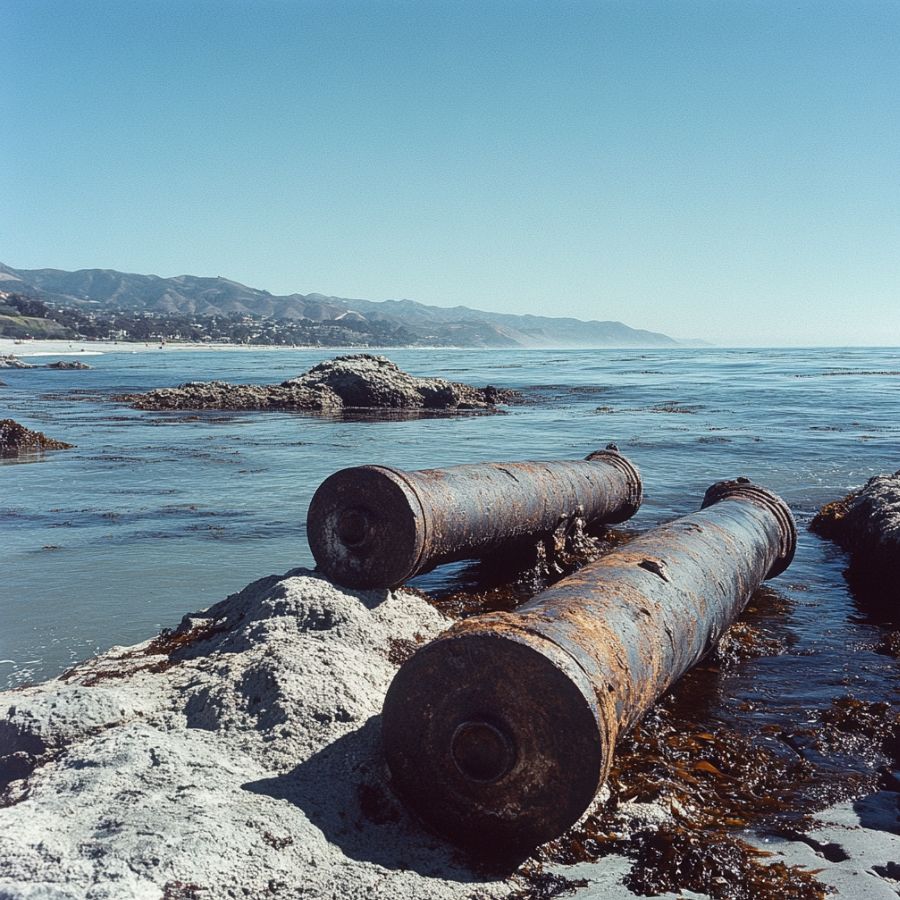
During the Texas Revolution, Texas received two six-pounder cannons from supporters in Cincinnati, Ohio. These cannons, later called the “Twin Sisters,” arrived in Texas in 1836.
They played a decisive role in the Battle of San Jacinto, where Texian forces, led by General Sam Houston, defeated the Mexican army under General Santa Anna. This victory secured Texas’ independence from Mexico.
After the revolution, the cannons saw further action in 1842 against another Mexican invasion. By the time of the American Civil War, they were reportedly taken to Houston.
Some accounts suggest they were melted down for scrap, while others claim they were buried to prevent Union forces from capturing them. Efforts to locate the original Twin Sisters have been unsuccessful, though replicas were made in the 20th century for commemorations.
How much the treasure would be worth today
The historical significance of the Twin Sisters could make them worth at least $1 million.
Lost Cabin Gold Mine – $50,000,000+
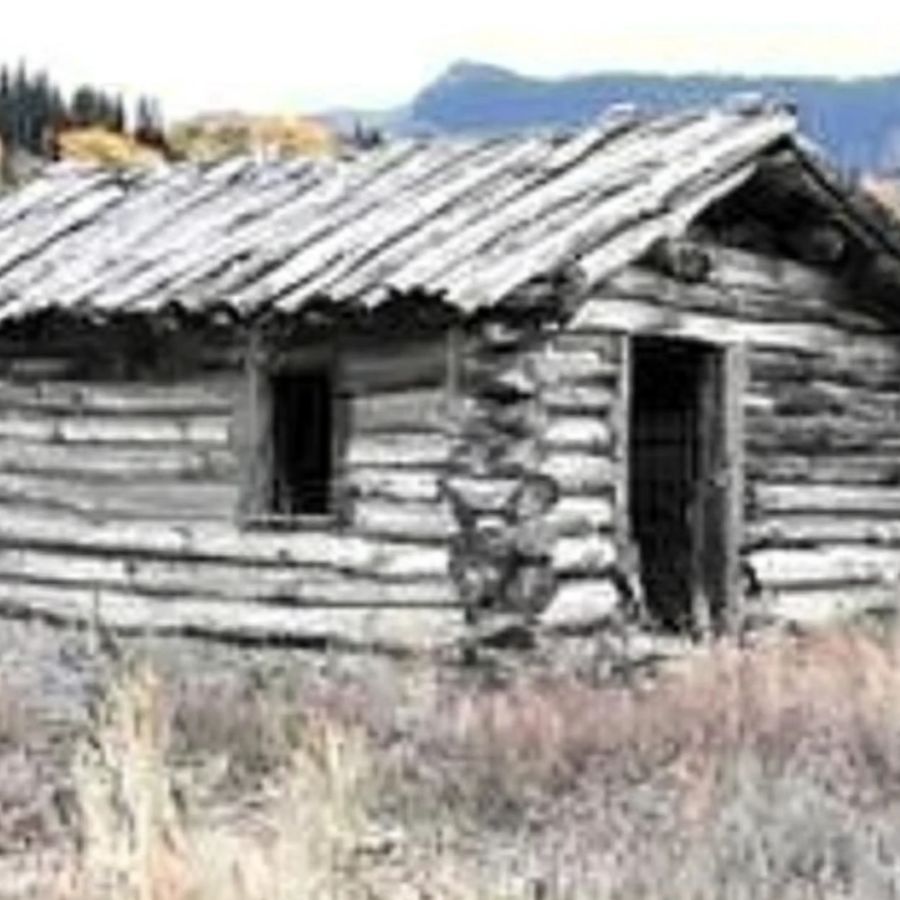
In the late 19th century, a group of prospectors discovered a hidden gold deposit while traveling through the Bighorn Mountains in Wyoming. The men built a cabin and began mining, pulling significant amounts of gold from the ground.
However, their fortune was short-lived. A band of Native American warriors attacked the group, killing most of them. The survivors fled without marking the exact location of the mine.
Years later, one of the men returned, but he was unable to relocate the gold-rich site. Over time, different accounts of the story emerged. Some versions place the mine in Montana or the Little Rockies.
The lack of consistent details has made the mine nearly impossible to find, but several people have claimed to have stumbled upon rich veins of gold in the region, only to lose track of the site again.
How much the treasure would be worth today
The Lost Cabin Gold Mine’s reserves could be worth $50 million or more.
Natchez Trace Treasure – $10,000,000+
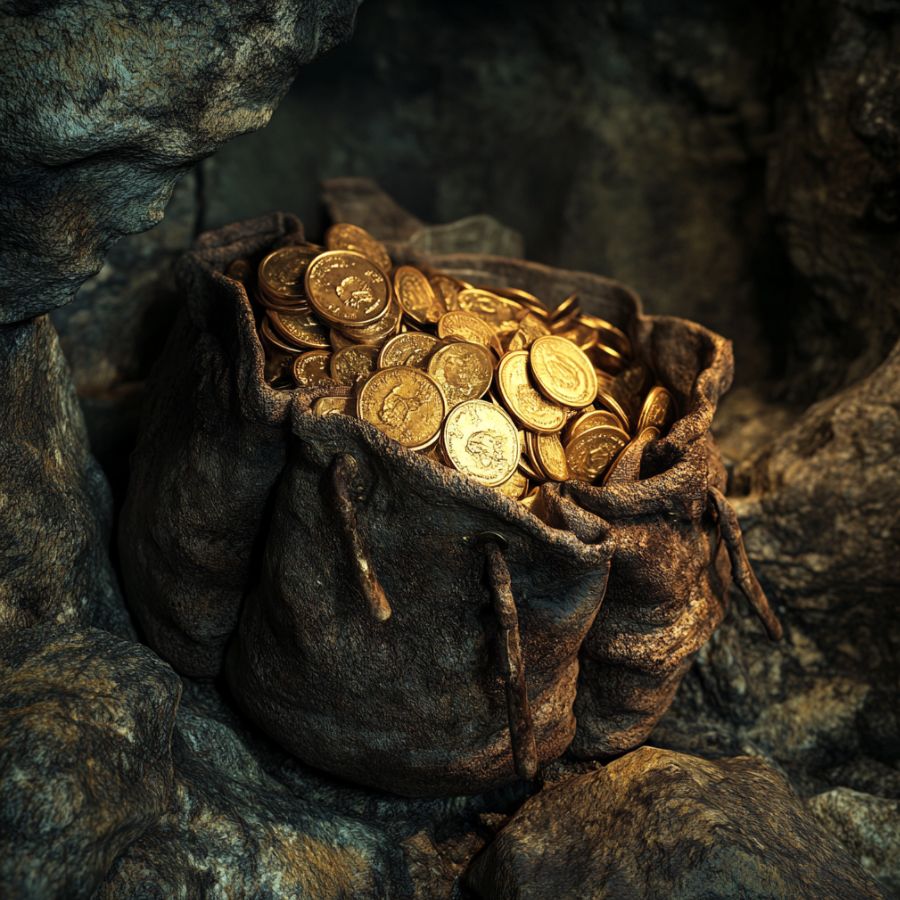
The Natchez Trace is an ancient trail that runs from Mississippi to Tennessee. It was once a major route for traders, settlers, and outlaws.
During the early 19th century, bandits like Samuel Mason and the Harpe brothers terrorized travelers along the trace. They would steal money, gold, and other valuables before disappearing into the dense forests.
One well-documented case involves the Mason gang, who were active along the Mississippi River and the Trace. Authorities captured some of the gang members, but before they could be executed, Mason and others supposedly hid a large amount of stolen gold and silver along the trail.
Some treasure hunters believe caches of outlaw loot still exist near old campsites and caves. In the 1930s, a group found a collection of old Spanish coins near Port Gibson, Mississippi, suggesting some of the loot may still be out there.
How much the treasure would be worth today
The Natchez Trace Treasure could be worth $5 to $10 million.
Lost Confederate Payroll – $3,000,000+
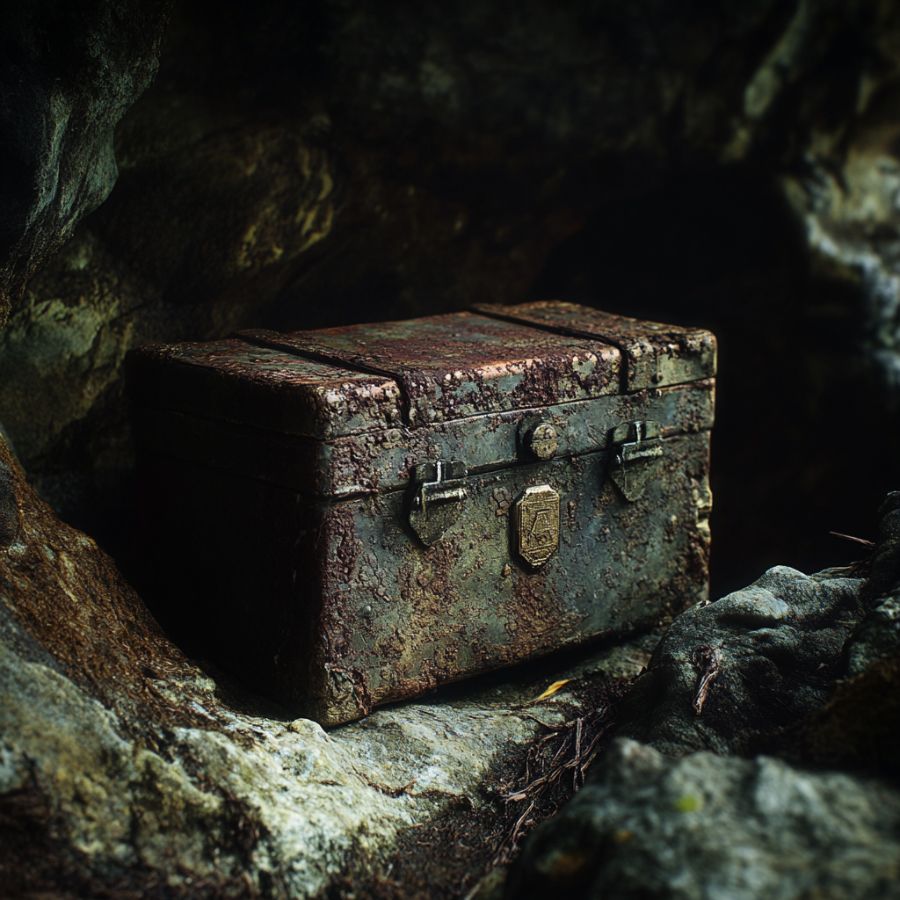
As the Civil War came to an end in April 1865, the Confederate government attempted to move its remaining treasury southward. The gold and silver, worth millions, was loaded onto wagons and transported from Richmond, Virginia.
General Robert E. Lee’s army had already surrendered, and Union forces were closing in. Part of the Confederate payroll, which was meant to pay soldiers and officials, vanished in the Ozarks of Missouri.
Some reports suggest that Confederate troops buried it to prevent capture. Other accounts claim bandits or retreating soldiers stole it. In the late 1800s, farmers in Missouri unearthed Confederate coins in the area, hinting that part of the hoard might still be there.
How much the treasure would be worth today
The lost Confederate payroll would be worth around $3 million today.
John Dillinger’s Treasure – $7,000,000+

John Dillinger, one of the most infamous bank robbers of the Great Depression, terrorized the Midwest in the early 1930s. He and his gang stole over $500,000 from banks while constantly evading law enforcement.
Knowing he was being hunted, Dillinger stashed money in secret locations to avoid losing it if captured. He favored remote hideouts and abandoned farmhouses, making his hiding spots difficult to trace.
One of the most talked-about caches is in Wisconsin, near Mercer, where Dillinger supposedly buried a metal box containing thousands of dollars. Another rumored location is a farm in Mooresville, Indiana, where his father lived.
In July 1934, Dillinger was shot and killed outside the Biograph Theater in Chicago. His sudden death meant he never had the chance to retrieve his hidden money. While some of his associates might have known about his stashes, no records indicate that the money was ever recovered.
How much the treasure would be worth today
Dillinger’s hidden money could be worth over $7 million.
San Saba Mine – $50,000,000+
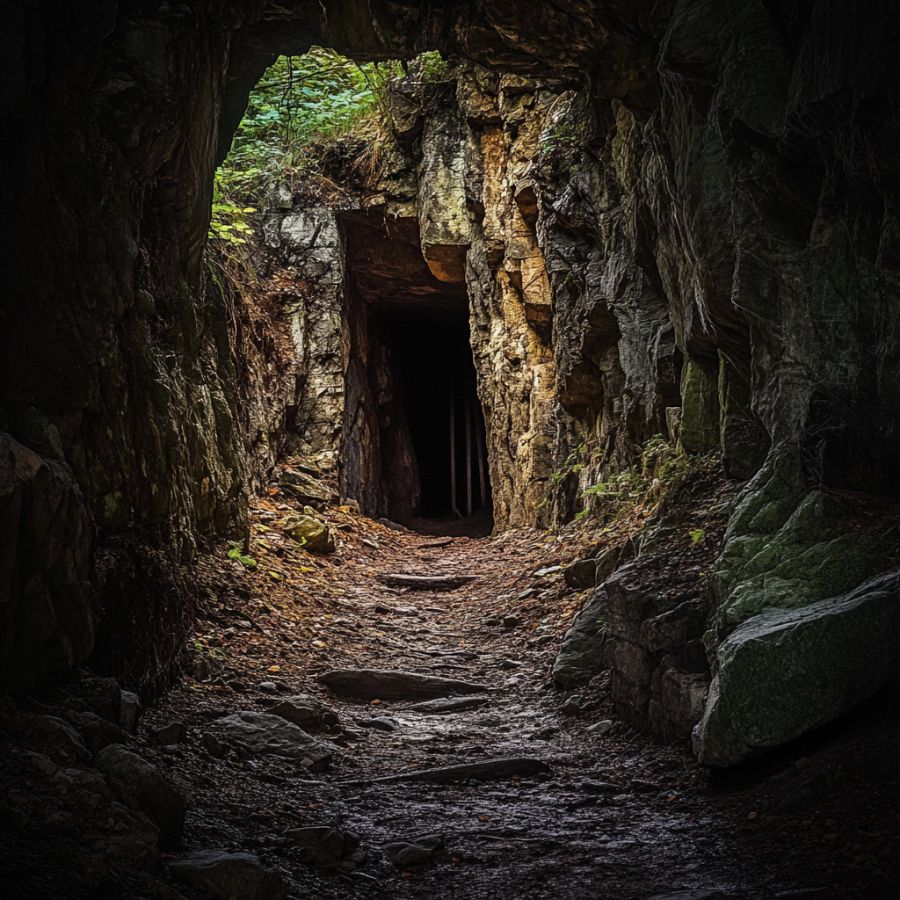
In 1756, missionaries at San Sabá Mission learned from Lipan Apache guides about rich gold deposits in the surrounding hills. They sent word to Spanish officials, who immediately ordered mining operations to begin.
As soon as the Spanish started extracting gold, they faced fierce resistance from the Comanche. These warriors saw the mines as a violation of their land. After repeated attacks, the mission was abandoned, and the Spanish miners fled. Some reports suggest they buried large amounts of unrefined gold before escaping.
Local legends claim that in the 19th century, explorers found tunnels and mining tools but no trace of the gold. The rugged Texas Hill Country holds many secrets, and the lost San Saba Mine remains one of the most intriguing.
How much the treasure would be worth today
The gold from the San Saba Mine could be worth over $50 million, depending on its purity.
Reynolds Gang Loot – $2,000,000+
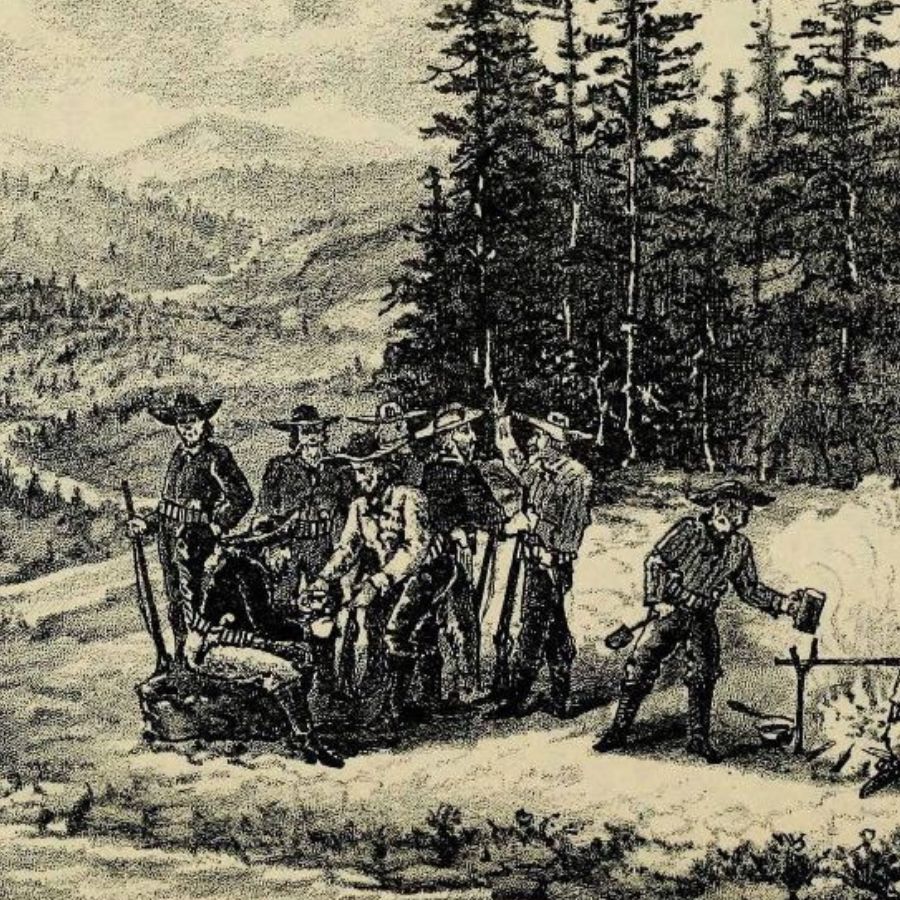
In the summer of 1864, a group of Confederate raiders known as the Reynolds Gang terrorized stagecoaches and gold miners in Colorado’s South Park region. They ambushed travelers, stealing cash, gold dust, and other valuables.
Some accounts suggest their goal was to fund Confederate operations in the West. As Union soldiers pursued them, the gang decided to hide their loot before making a final stand.
The gang is believed to have buried around $60,000 in gold near Mount Logan, a rugged area west of Denver. Union troops ambushed them soon after, killing or capturing most of the men. The few who escaped were never able to return to recover the treasure.
Over the years, wildfires and landslides have altered the landscape, making it nearly impossible to pinpoint the exact location.
How much the treasure would be worth today
The Reynolds Gang loot could be valued at over $2 million, based on current gold prices.
Old Spanish Treasure Cave – $15,000,000+
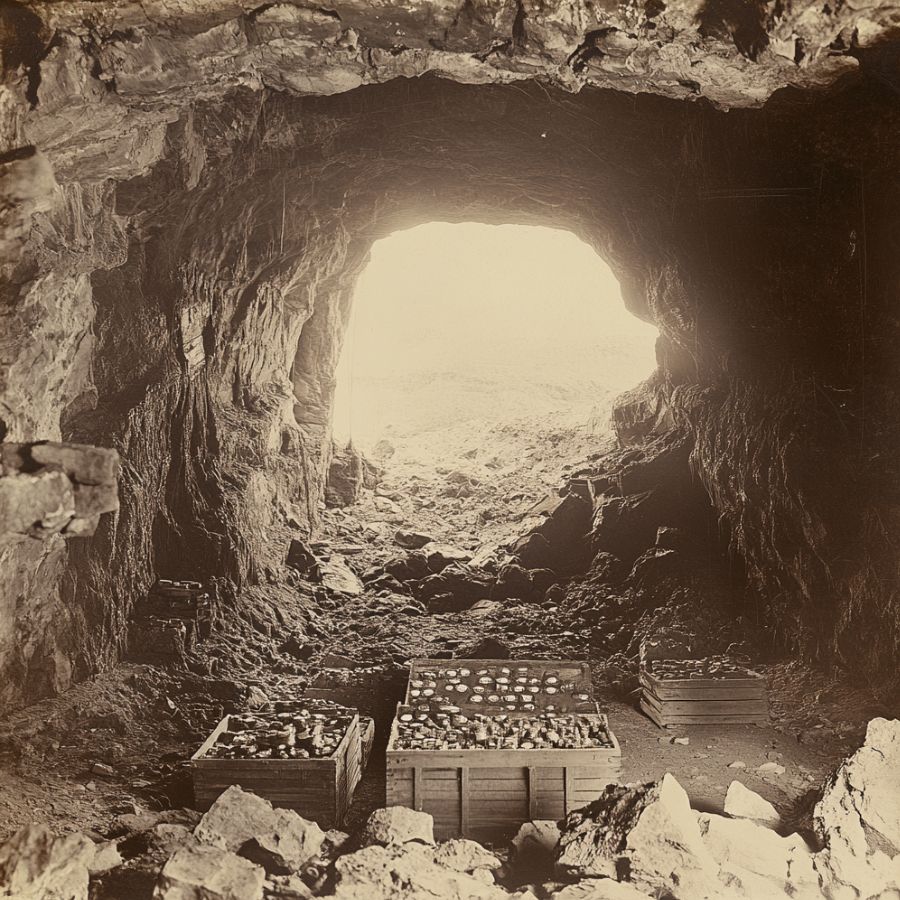
Spanish conquistadors in the 1500s roamed the Ozarks, searching for gold and silver. Legends say a group of explorers raided a Native American settlement and made off with a massive hoard of gold.
Fearing they would be attacked, they sought refuge in a large cave along the Missouri-Arkansas border. To keep their treasure safe, they hid it deep within the cavern and sealed the entrance with stones.
Only one man from the expedition reportedly survived. He later etched a map into a piece of limestone, marking the cave’s location. When settlers found the map centuries later, they followed the directions but never uncovered the gold.
Explorers have found old weapons and carvings inside what is now known as the Old Spanish Treasure Cave, but no sign of the missing gold has surfaced.
How much the treasure would be worth today
The gold hidden in the Old Spanish Treasure Cave could be worth $15 million today.
Lost Blue Bucket Mine – $100,000,000+

In 1845, a wagon train heading west took a wrong turn along the Oregon Trail. The travelers, lost in unfamiliar terrain, set up camp near a dry creek bed. While gathering water, children in the group picked up shiny pebbles and placed them in a blue bucket. When they showed the adults, the rocks were dismissed as worthless and left behind.
Years later, after gold was discovered in California, a woman from the wagon train remembered the unusual stones. She took one to an assayer, who confirmed it was gold. This revelation sparked a frenzy, but by then, no one could recall exactly where the camp had been.
Theories place the Lost Blue Bucket Mine somewhere in eastern Oregon, possibly near the John Day River. Many have searched the region, hoping to find the creek bed where the gold was first discovered. If located, the deposit could rival some of the richest gold strikes in the West.
How much the treasure would be worth today
The Lost Blue Bucket Mine’s gold deposits could be worth over $100 million if they exist.

